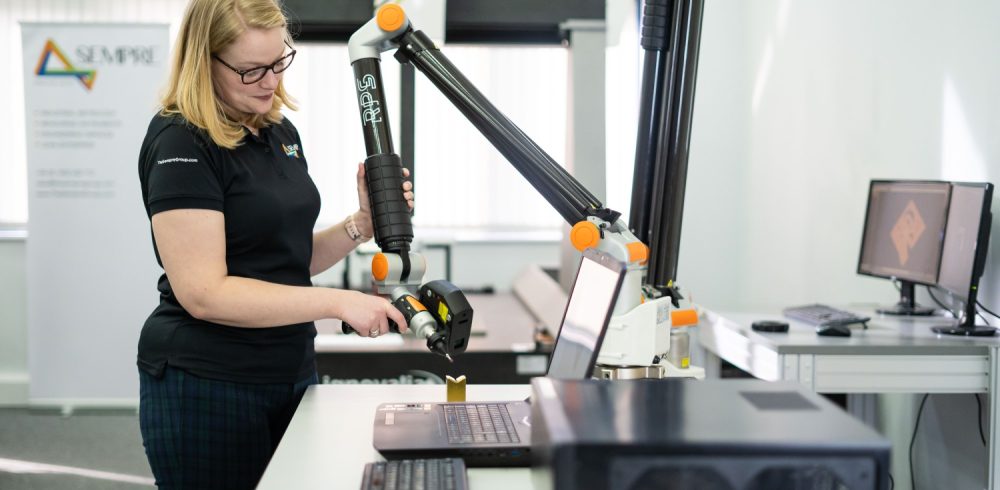According to the 2019 Annual Product Manager Survey from Gartner Inc, 45 per cent of all product launches are delayed. Material shortages, unplanned downtime and supply chain problems are just some of the potential issues that can delay the journey to the end user — the crash of the Ever Given in 2021, for example, held up nearly $60 billion of trade.
While bottlenecks outside of the facility are difficult to control, manufacturers can take measurement to prevent bottlenecks on the assembly line. Here Kevin Hall, applications engineer at industrial metrology specialist The Sempre Group, explores why measurement can be common manufacturing bottlenecks and how to overcome this obstacle.
In order to meet customer demand and remain competitive in their sector, manufacturers must consider how they can improve productivity and shorten delivery times, while still delivering efficiency and accuracy. However, balancing speed and quality can be difficult when manufacturers don’t have all the necessary tools at their disposal.
As manufacturing equipment becomes more advanced it often produces parts more quickly. While this enables manufacturers to improve productivity, if other areas of production are less advanced, they will create production bottlenecks.
Following assembly, manufacturers must measure parts to ensure they meet specification. However, if they only have one coordinate measuring machine (CMM), or they measure parts by hand using micrometers, manufacturers will do so at a much slower rate, significantly delaying the journey to market. Measuring any component manually not only slows down production, but it also introduces the risk of human error, reducing measurement reliability.
Why measure?
While it is a common bottleneck, manufacturers cannot simply stop measuring their parts. To ensure that every part is fit for purpose, manufacturers must confirm that they all meet specifications. During a first article inspection (FAI) report, manufacturers must outline the dimensions and characteristics of a small batch of the initial parts — all future components should then meet the parameters set out in this report.
Manufacturers are not required to measure every dimension of every part. However, they must frequently check the critical-to-quality (CTQ) dimensions — the five or six dimensions that are vital to ensuring the part meets specification.
So, how can manufacturers efficiently measure parts without slowing down production?
Removing the bottleneck
While investing in more measurement equipment could be a simple solution to removing bottlenecks, it might not be the most practical option. As well as the initial cost of the machine, manufacturers must invest in training to ensure that they can use the equipment correctly. Smaller manufacturers may not be able to buy equipment outright, so instead they can look to sub-contract measurement services.
By working with a metrology specialist, manufacturers can have peace of mind that someone else is measuring their parts accurately. Metrology engineers can take information from drawings and CAD files to determine the method of measurements and which machines to use. To efficiently measure complex parts, sub-contract measurement experts, such as The Sempre Group, can develop bespoke fixtures to hold parts steady. Once the customer agrees to the quote, engineers will measure a small batch of parts, sending reports back to the customer to verify they have met expectations. Once verified, engineers will measure the rest of the parts, deliver reports and send the parts back.
External factors are difficult to control — for example, manufacturers could not have predicted the supply chain delays caused by the grounding of the Ever Given. However, manufacturers can take action to remove unnecessary bottlenecks from within the factory without measurement. Instead of relying on one trained engineer and one in-house CMM, manufacturers can take the pressure off and speed up production by outsourcing measurement to dedicated experts.
The Sempre Group’s comprehensive range of systems allows its team to measure any size, shape or quantity of components and offer independent advice. Get in touch to find out more about its sub-contract measurement services.
Manufacturing & Engineering Magazine | The Home of Manufacturing Industry News















